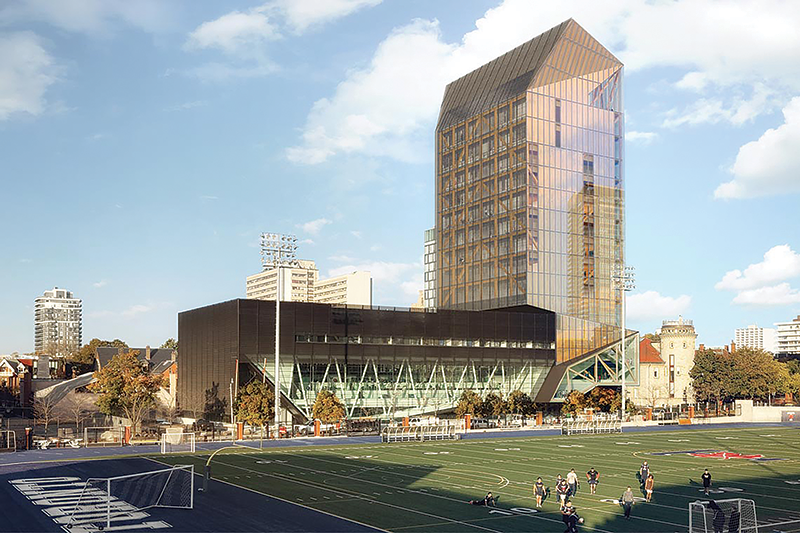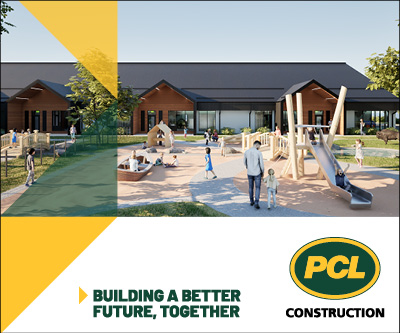Few years will have as much impact on infrastructure development as 2019 did. In the past 12 months we saw Ontario reveal its pipeline, Alberta slash its budget, consistent spending in B.C. and Quebec, the Canada Infrastructure Bank (CIB) start investing and, oh yeah, a little thing called the federal election.
And while it may be impossible to top the overall impact of that list this year, 2020 is not without its important infrastructure stories to track.
Here are 10 that we will be paying particular attention to in the 12 months ahead.
Federal spending priorities
As the Liberal government forms political alliances to push its national agenda forward, we should get a better sense of whether or not it will be spending as usual on infrastructure. If what we heard in the campaign from all parties is any indication, it seems likely that infrastructure will remain an investment priority.
What else could become an area of focused infrastructure spending? Based on economic pressures and previous spending success, perhaps additional funding for trade-related infrastructure, like rail lines, ports, transportation corridors, and airports?
Bridging the Surrey gap
The Surrey Langley SkyTrain project cannot be built to the length of the previous Surrey LRT route for the same amount of money. But that’s not what the public was told during the 2018 municipal election. So now the Mayors’ Council is looking to the provincial and federal governments for additional funding to make up the shortfall. With either government step in and add to the project funding, already at $2.825 billion?
Support for Alberta municipalities?
What’s one way to gain support in a province where you failed to win a single seat in an important federal election? Perhaps you can secure friends by providing the funding needed to make up for an unexpected financial shortfall?
The fiscally-conservative budget released by the Alberta government cut infrastructure funding resources province-wide. The City of Edmonton, among others, has lots of pressing infrastructure priorities its wants/needs to address. Is this a win/win situation here for the federal Liberal minority government?
Hamilton’s transit solution
The Government of Ontario stunned residents in and around Hamilton when it announced that it was cancelling its $1 billion support for the Hamilton light rail transit project, citing egregious cost overruns.
Minister of Transportation Caroline Mulroney has cited that the money is still available to the city, but that things like roads and highways can now be targeted with the investment dollars. Sure, there will be roads that can use the investment, but for a community desperately trying to modernize its economy, a modern transit system goes hand-in-hand?
The ball is back in the city’s court. Keep a close eye on this issue.
Breaking the Bank
The Canada Infrastructure Bank is up and running. Project proposals have been submitted. Time has been taken for due diligence to be done. Now the expectation is that a pipeline of projects could soon be released with the dust settled on the federal election.
To date, we have seen everything from $20 million for a municipal water project to more than $1 billion for a $6-billion-plus transit project. We know that investments will focus on projects where steady revenues are involved, and we expect money to be spent, but how and where will be fun to watch.
A solution for Massey?
In October, we learned that the Metro Vancouver board approved a new eight-lane tunnel to replace the existing George Massey Tunnel. There are some environmental concerns cited as part of the approval, including the need to displace 1.5 million tonnes of salt-contaminated soil, and proper consultation with impacted First Nations communities also needs to take place.
Is the controversy now over? Is this the final version of the project that will actually make it through procurement to construction? After years of uncertainty, we could soon be ready to break ground on one of British Columbia’s most controversial transportation projects.
Unsolicited proposals
It will be worth watching how Ontario’s unsolicited proposal framework develops. When Minister Laurie Scott made the announcement, there were no timelines attached regarding how long the evaluation process would take. Could we see the first project reach procurement in 2020? Hard to say, but it will definitely be worth watching how the process unfolds.
Finding municipal balance
Municipalities across Canada are stretched thin, balancing the need for new assets with the need to rehabilitate existing assets. On top of that, the push continues for a focus on outcomes-based procurement rather than a procurement model that favours to lowest bid above all else.
How do we balance all of the issues facing today’s municipalities/ Are there policy, governance, or funding solutions that can help? This will be an important dialogue throughout 2020.
The growth of tall timber
The past year was significant in the growth of the mass timber market in Canada, especially in B.C. and Ontario. Major projects involving mass timber construction were announced in both provinces, with the latter welcoming its first cross-laminated timber manufacturer, and the Toronto Region Conservation Authority unveiled its new headquarters that incorporates the use of engineered wood products.
With Building Code changes coming into effect in 2020 that would allow for expanded use of mass timber construction, is this the final obstacle to overcome for engineered wood products to reach wider adoption throughout Canada?
Powering the north
The Wataynikaneyap Transmission Project has provided a new model for powering remote communities with clean energy. In 2019, we got news of a proposed transmission project of a similar ilk with the news emerging about the proposed 900-kilometre Kivalliq Hydro-Fibre Link.
Will the Kivalliq project secure funding to move forward? With a model for success in place in northern Ontario, could we see more projects like this emerge?
This article originally appeared in the January/February issue of ReNew Canada.












